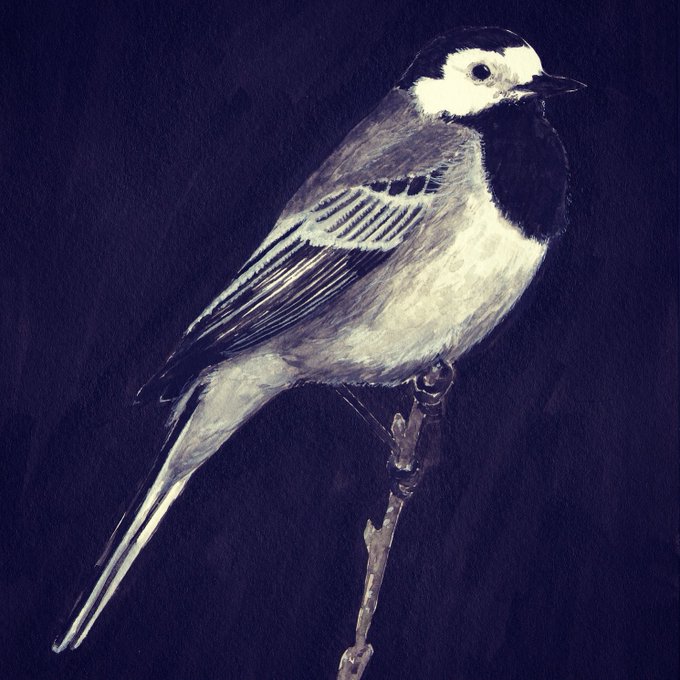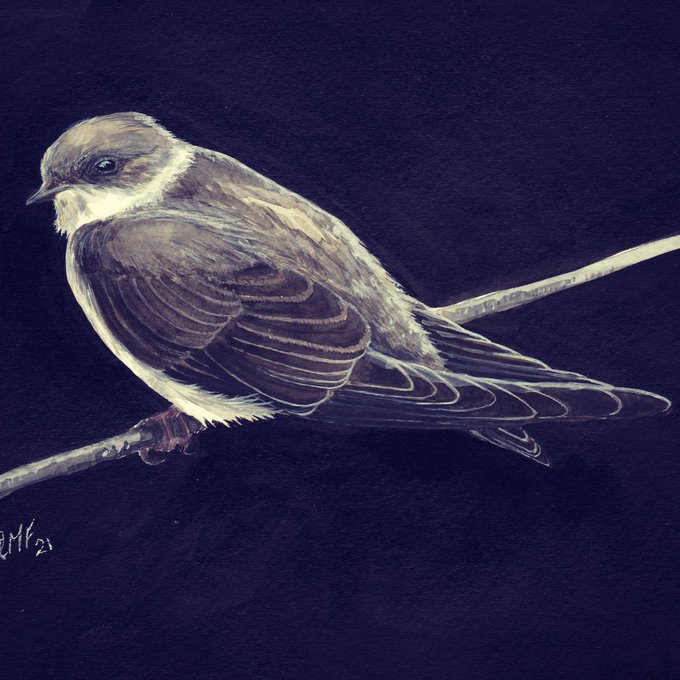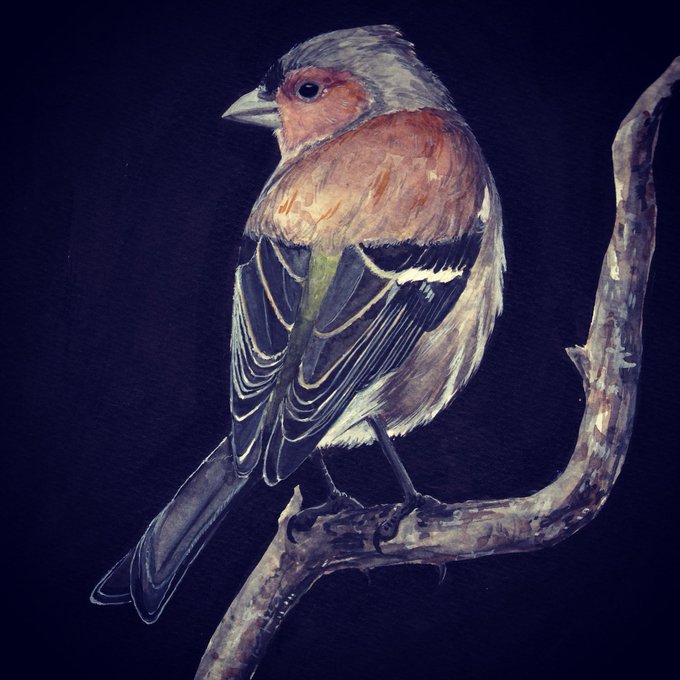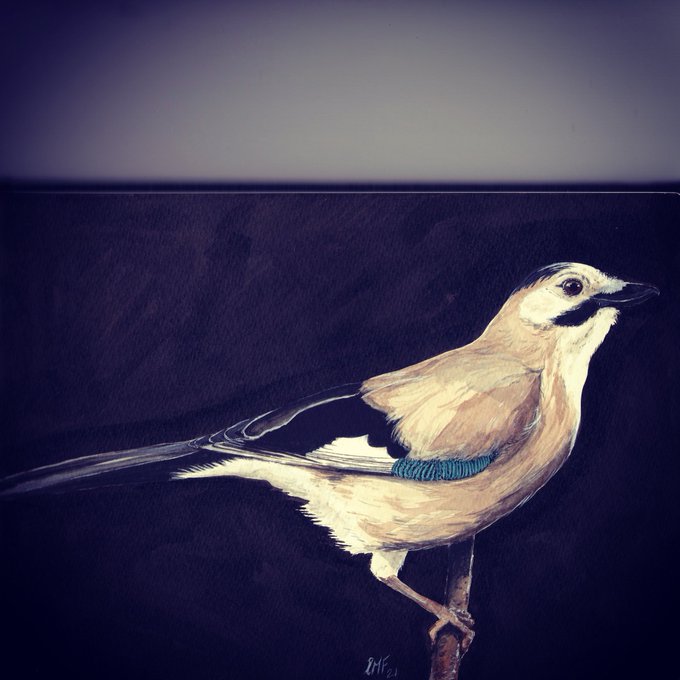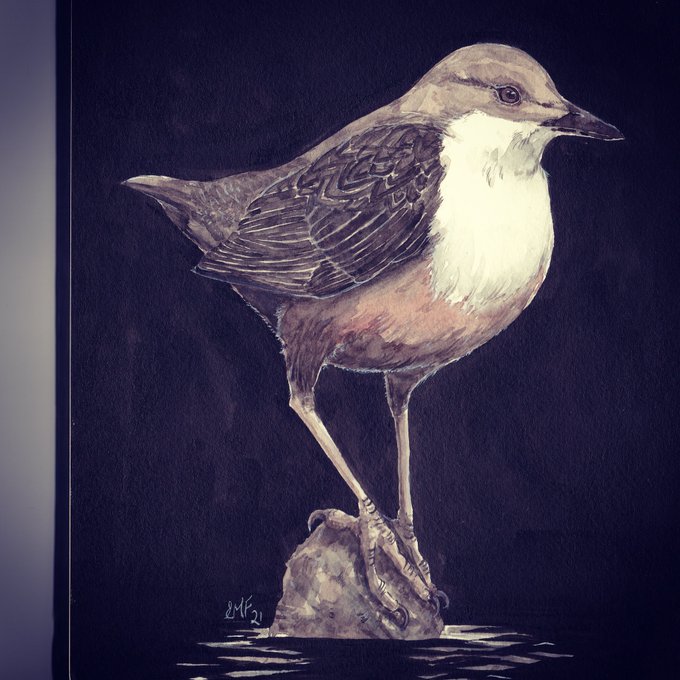Birdtober Day 31. Pied Wagtail.
Though it’s known to be a host species for cuckoo, the wagtail deserts its nest if it has been parasitised - possibly because it’s too small to push the intruding egg out, and too short-billed to destroy the egg
#birdtober #inktober2021 #wagtail
Birdtober Day 21. Sand Martin.
Digs burrows in steep, sandy cliffs, usually around water. The tunnels it bores can be up to a metre in length, and at the end is a chamber where four or five eggs are laid on collected straw and feathers.
#birdtober #inktober2021 #sandmartin
Birdtober Day 15. Chaffinch.
No fact, just tired.
#birdtober #inktober2021 #chaffinch
Birdtober Day 12. Eurasian Jay.
They often make repeated trips to collect acorns from one area and cache them elsewhere, so they play a vital role in the establishment and maintenance of the few native oak woodlands still left in Ireland.
#eurasianjay #birdtober #inktober2021
Birdtober Day 5. Little Egret.
The white ones are always tough to paint fml…
It was hunted extensively in the 19th century to provide plumes for the decoration of hats and became locally extinct in northwestern Europe, they’re of least concern now :)
#birdtober #littleegret
Day 4. Dipper.
Their wings are relatively short but strongly muscled, enabling them to be used as flippers underwater!
#dipper #birdtober #inktober2021
Birdtober Day 1. Arctic Tern.
With an average annual roundtrip lengths of about 90,000 km, Arctic Terns are by far the longest migrations known in the animal kingdom.
#birdtober #arctictern
A banded broadbill that didn’t make the cut off date for birdtober.
#birdtober #bandedbroadbill
Birdtober Day 5 - Cardinal. Many people are perplexed each spring by the sight of a cardinal attacking its reflection in a window or car mirror. They are obsessed with defending their territory against any intruders, including their own reflection. #birdtober #cardinal


